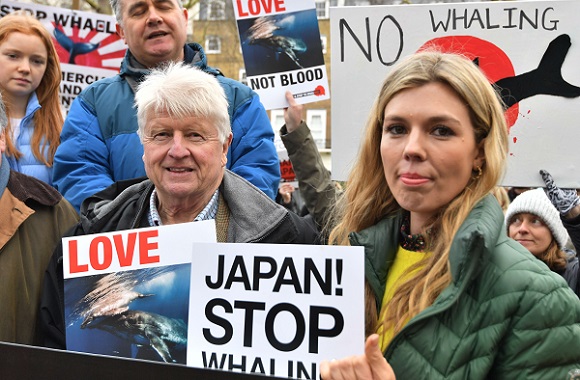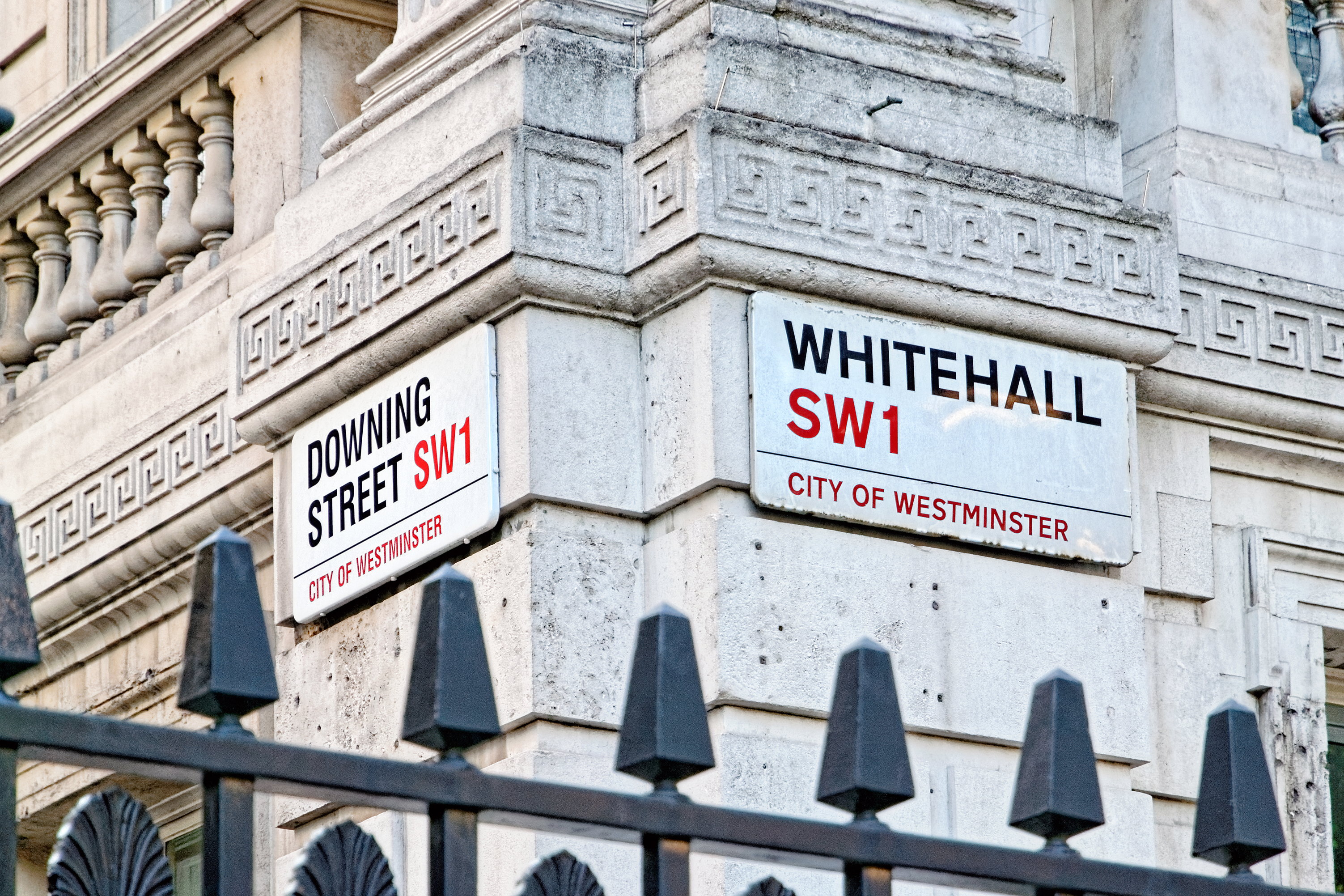Whaling in the faroe islands
The Faroe Islands are an autonomous Danish territory located some 200 miles north west of the United Kingdom, midway between Norway and Iceland.
Each year many Faroe islanders engage in whaling known as the grindadrap. This is a practice that involves driving certain species of whales (primarily pilot whales) alongside dolphins into shallow bays around the island. The whales are then beached, before being killed and butchered for meat, later eaten by the islanders.
Each summer an average of 700 whales and up to 500 white sided dolphins (the quota set by the Faroese government) are said to be hunted in this fashion.
Although the practice has been regulated by the Faroese government since 1948, such that participants must be trained, animal welfare campaigners point to the barbarity of the practice in which the sea becomes very bloody.


Whaling in the Faroe Islands is the closest example of whaling to the United Kingdom.
What is whaling?
Whaling is the hunting and killing of whales for commercial, recreational or scientific purposes. Once a large industry providing materials for a range of industrial processes, whaling today is confined to a handful of countries.
In 1946, the International Whaling Commission (IWC) was established under the International Convention for the Regulation of Whaling (ICRW) to “provide for the proper conservation of whale stocks and thus make possible the orderly development of the whaling industry”.
Measures adopted by the commission included hunting bans on certain species and females accompanied by calves, the designation of whale sanctuaries, defining set hunting seasons, and imposing limits on the number and size of whales to be hunted.

Norway continues to hunt the minke whale.
Despite these regulations, the 1970s marked the rise of fervent anti-poaching movements and pro-animal welfare campaigns. Reports published by the Convention on International Trade in Endangered Species in 1977 and 1981 identified several whale species as being in danger of extinction.
Amidst growing international concern for hunted species, members of the International Whaling Commission voted in favour of implementing a moratorium on commercial whaling for an initial period of ten years. The IWC moratorium came into effect in 1986 and remains in place today.
Among International Whaling Commission members, there is speculation that Iceland and Norway continue to hunt commercially. Whaling is also prevalent in several other countries not a party to the Commission, including Canada, Indonesia and South Korea. Some traditional communities also hunt whales for subsistence purposes, specifically Inuit populations in Canada, Greenland and Alaska.
Opposition to whaling
Conservationists and animal rights activists argue that whaling is unacceptable on two counts: firstly because of the suffering endured by the animals, and secondly because it threatens the extinction of the species.
Whales are generally killed by grenade-tipped harpoons, designed to explode inside the animal. However, as fast-moving creatures living in rough seas, whales are often subject to repeated blows before they are killed. Alternatively, the traditional two-flue harpoon penetrates no deeper than the whale’s blubber, leaving the animal to escape seriously wounded and in significant pain.
Animal welfare advocates argue that whaling is particularly cruel considering a whale’s highly developed mental capacity, meaning it has an enhanced ability to not just feel pain but suffer tremendously. The whaling industry claims that the average time taken for whales to die is two minutes, while opponents claim that this is closer to an hour.
Although whale populations are difficult to track, extensive efforts are made by IWC to conduct regular research into whale behaviour and cognition. It is undeniable that many species of whale have recovered considerably since the moratorium came into force, yet this has led many whaling nations to seek a revival of commercial hunting. The sustainability of existing whale stocks is a point of bitter dispute within the IWC.
Why do some countries hunt whales?
The most vocal proponents of commercial whaling are Iceland, Japan and Norway – the latter having refused to implement the whaling moratorium from the outset.
These countries maintain that hunting whales is an important part of their culture and is critical to their fishing industries. They also criticise the IWC’s recognition of whaling in aboriginal tradition, while rejecting the cultural case in developed states.
The reasons people hunt whales can be characterised as follows:
Research whaling
Under Article VIII of the International Whaling Commission’s founding treaty, countries may apply for permits authorising controlled and monitored scientific whaling.
To minimise waste, however, the Article concedes that: “Any whales taken under these special permits shall… be processed and the proceeds shall be dealt with in accordance with directions issued by the Government”. This effectively permitted the sales of whale meat hunted for ‘research’. It was suggested that the research pretext was subsequently exploited by countries to conceal unlawful whaling practices or top-up their existing quotas.
Commercial whaling
In December 2018, the Japanese government announced its withdrawal from the IWC, abandoning the previous practice of ‘research whaling’ in preference for commercial whaling.
This decision generated multiple complaints from animal rights defenders across the globe, including an open letter from the World Wildlife Funding claiming that Japan’s research program failed to meet “minimum standards for credible science.”[1] Over the course of 2021, Japan will hunt a self-defined quota of 171 minke whales, 187 Bryde’s whales and 25 sei whales.
Japan has traditionally claimed that several of its small communities depend on whaling to sustain their livelihoods; specifically, arguing that the IWC’s previous ban on minke whaling resulted in cultural disintegration and financial hardship in these areas.
Having returned to commercial whaling, Japan joins Norway in openly refuting international law and evading international constraints.
Iceland’s research program was effective from 2003 to 2007, during which a total of 200 minke whales were killed. In October 2006, however, the Icelandic government renewed licences for a commercial whale hunt, to take place alongside the existing program. The Icelandic plans were theoretically lawful on the grounds of an exemption to the moratorium granted to Iceland on re-joining the ICW. The decision was nonetheless met with a formal diplomatic protest submitted to the Icelandic government that year. The complaint was led by the UK and signed by states including the United States, Australia, Brazil, France, Germany, Finland and Sweden.
The Icelandic support for whaling takes root in its national heritage. Since gaining independence in 1944, the country has placed great value on self-sufficiency and self-governance. Whales are widely considered ‘Icelandic resources’.
Significantly, Iceland is the only country in the world to hunt the endangered finback whale. While peaking the intrigue of tourists, finback meat isn’t especially popular to the national population. According to the Whale and Dolphin Conservation, only 1.7% of Icelanders eat whale meat, meaning that most of it is shipped to Japan.
In recent years, the explosion of whale watching tourism in Iceland has sparked conflict between the tourist and commercial whaling industry. In 2015, the whale watching industry attracted around 300,000 visitors to Iceland – a number equitable to the country’s entire population. On these grounds, tourist groups hold that whale watching will bring in far more income to the country than a return to commercial whaling.
Aboriginal Subsistence Whaling
Whalers in Greenland hunt with a quota granted to them by the International Whaling Commission. The quota was justified on the grounds that ‘Aboriginal Subsistence Whaling’ (ASW) is necessary for fulfilling the cultural and nutritional needs of the local Inuit populations.
However, evidence suggests that ambiguity between commercial hunting and aboriginal subsistence hunting sustains the continued practice of unlawful whaling. Greenland’s whalers maintain that hunting caters for fundamental local requirements. Yet in 2014, it was discovered that whale meat was being sold to both local Inuit and tourists, and overtly so. In 2018, Greenland killed 131 large whales, made up of 118 minke whales, 7 fin whales and 6 humpbacks.
History of whaling
Whaling has a long tradition in many maritime communities. Many whaling societies regard the practice as an integral part of their cultural identities, a central issue in today’s disputes.
Whale hunting began as a purely coastal activity, whereby whales spotted from the shore were driven on to beaches and killed. Necessarily, only small whales could be killed in this way. The development of the “drogue” (a harpoon with a buoyant object attached, intended to tire whales, making them easier to approach and kill) and improvements in maritime technology, permitted the hunting of larger animals and hunting away from the coasts. The efficiency of the whalers and the demand for their products, in the form of meat, oil and baleen, continued to grow.
Early-modern Europe
By the late 16th Century, right whales – so-called because they were the “right” whales to hunt, as they were placid, rich in baleen and oil, and floated after killing – were virtually extinct in the North Atlantic.
The early 17th Century saw European whaling heading north, into the Arctic region, in pursuit of bowhead whales. This fishery extended into the Pacific Arctic in the 18th Century, as Atlantic stocks declined, and the American industry boomed, despite being all but wiped out during the War of Independence.
In the 19th Century, self-sufficient whaling ships, at sea for months or even years on end, hunted every kind of whale across the whole of the world’s seas. The end of the century saw the development of steam-driven ships and ship-mounted harpoon guns, rendering the practice considerably safer for whalemen.
The industry continued to thrive in the first half of the 20th Century, and stocks of many types of whale dwindled to unsustainably low levels.
20th-century commitments to whale preservation
The first major international agreement on whaling, entitled the International Convention for the Regulation of Whaling, was signed in Washington on the 2nd December 1946. The purpose of the convention was to “provide for the proper conservation of whale stocks and thus make possible the orderly development of the whaling industry”. T
he Convention came in the wake of growing international concern about whale numbers and a slumping market for whale oil, with the rise of petrol and other fossil fuels.
The schedule to the Convention set out measures, which amongst other things: provided for the complete protection of certain species; designated specified areas as whale sanctuaries; set limits on the number and size of whales which could be killed; prescribed open and closed seasons; and identified areas for whaling. It also prohibited the capture of suckling calves and female whales accompanied by calves.
However, the wave of environmentalism that sprang up in the 1960s picked up the decimation of the whale population as a leading theme, with “Save the Whale” becoming one of its most successful campaigns of the 1970s, bringing groups like Greenpeace to prominence. The massive international campaign against whaling, saw many countries join the IWC, with the sole aim of achieving a ban. It led to the adoption of the moratorium on whaling that came in during the 1980s.
Post-2000
During 2003, several countries moved to recommence commercial whaling, arguing that the hiatus had allowed whale stocks to recover sufficiently enough for hunting to continue without conservation damage. Opponents of the moratorium argued that the high numbers of minke whale were actually threatening fish stocks in some areas.
In September 2018, the IWC assembled in Florianópolis, Brazil, to discuss a proposal by Japan to re-introduce lawful commercial whaling. By a majority, members concluded that the primary purpose of the Commission is the conservation of whales. From there on, the IWC committed to safeguarding whales in perpetuity, promoting the return of the whale population to their pre-industrial levels.
Significantly, it also conceded that the use of whales in unethical research methods is non-essential. A select number of indigenous communities were still permitted to hunt.
This response prompted Japan to withdraw its membership from the IWC, claiming that the body had failed to deliver its aim of promoting sustainable hunting.
Current Anti Whaling Campaigns
In recent years, anti-whaling campaigners have been applying diplomatic pressure on governments to withdraw commercial whaling licences.
In January 2019, a UK-based open letter was sent to the Japanese Prime Minister, Shinzō Abe, condemning its withdrawal from the IWC and urging it to re-join. Notable signatories included actors Ricky Gervais and Joanna Lumley, and broadcasters Stephen Fry and Chris Packham.
The London Committee for the Abolition of Whaling also led a peaceful protest march to the Japanese Embassy in London. This intervention from the UK public builds upon years of peaceful protest and vocal condemnation from the likes of Greenpeace, the WWF, Whale and Dolphin Conservation, and Humane Society International.
In the UK, the Prime Minister’s father, Stanley Johnson, and his wife, Carrie Johnson are both passionate campaigners against whaling and have attended marches on the issue. It would seem logical to assume, that they both must be lobbying the Prime Minister on the issue.

The Prime Minister’s, father, and his wife, attending an anti whaling protest in 2019.
Some campaigners are calling for a hard-line approach which seeks a blanket ban to all forms of whaling, including that carried out for ‘research’. Humane Society International, for instance, has drafted a template open letter to the Japanese Government making the following statement: “I do not believe that there is any reliable way to humanely kill a whale at sea, and I find the cruelty of whaling unacceptable in the modern world.”
Quotes
“At a time when we are already seeing the tragic and irreversible destruction of our natural world, with the sea increasingly pumped full of plastics and climate change threatening entire ecosystems, it is more important than ever to take a stand against the cruel practice of whaling.” – Boris Johnson, 2021
“Iceland has always emphasised the need for careful conservation of marine resources and was one of the first countries in the world to take a conservationist approach to whaling.” – Government of Iceland, 2020
“Whaling is a despicable practice that offends our most basic humanity. I call on Japan to heed the wealth of global voices calling for an end to the senseless killing of whales once and for all.” – Ben Fogel, broadcaster and presenter, 2019
Statistics
Norway broke the moratorium in 1993 and resumed commercial whaling. Since then they have taken over 6,879 minke whales under objection. (Source – IWC)
The Japanese government subsidises whaling to the tune of approximately £7.3 million per year. (Source – UK Whales.org)










